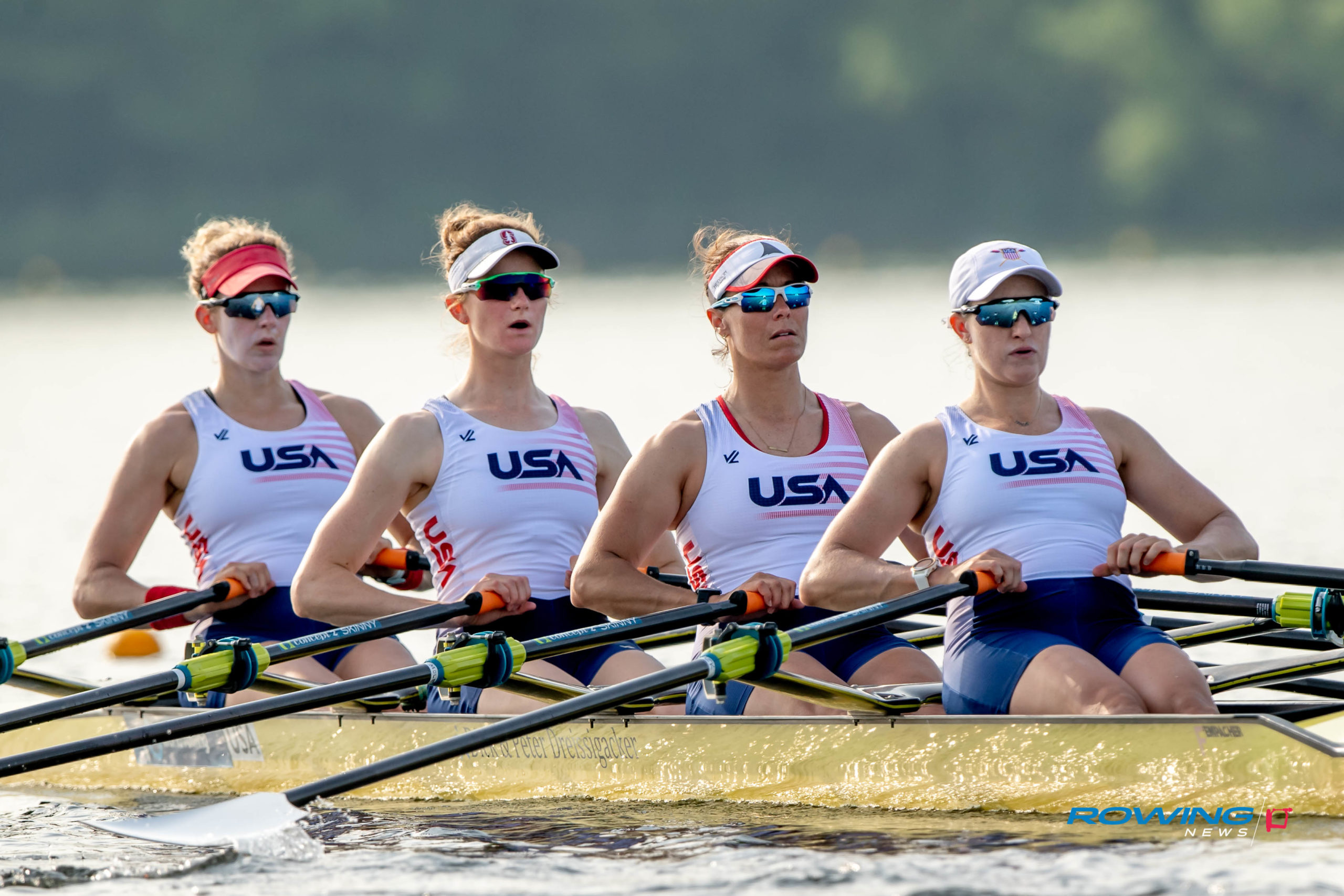BY VOLKER NOLTE
PHOTO BY ED MORAN
To continue reading…
This article is exclusively for Rowing News subscribers. For as little as $5 a month, you can get access to the best quality, independent reporting on all the issues that matter to the North American rowing community.
Already a subscriber? Login
Expert rowers describe their flow in a fast-moving boat as fluent, relaxed, and “light.” This seems, at first, like a contradiction. How can a rowing movement be fast and effortless at the same time?
One would posit that a crew has to pull hard to reach good speeds, and of course, it is correct to assume that power and rowing speed go hand in hand. The difference is that it “feels” light to the rowers when the motion is performed properly, and this has a lot to do with how the forces of an individual rower and those of the entire crew are coordinated. If done well, the rowers do not realize their effort, since all movements come together and generate a very positive feedback of flow and speed.
An important factor is the synchronization of all rowers’ movements–reaching the important points of the stroke at exactly the same time with the same speed, creating the very same power application in unison, and floating as a unit to the next catch in the most relaxed manner. Probably the most vital aspect of an expert stroke is the approach into the catch position–the reversal from the movement toward the stern to the push toward the bow, followed by the quick generation of blade force. To perform this turning motion and blade entry correctly requires a complex coordination of various parts–reaching a large oar angle at the catch, squaring the blade at the right moment, and synchronizing horizontal with vertical movements of the hands to bring the blade to the best position for finding water resistance in the shortest time.
This important phase of the stroke requires the rower to master the coordination of various forces, and it all begins with the proper approach into the full-reach position. Contrary to the old-fashioned idea of slowing down into the catch position and reducing the force on the footstretcher, we now know that it’s advantageous to reach the turning point with considerable pressure on the front part of the feet.
This swift and powerful movement is similar to a counter-movement jump, where a quick change of direction at the low point of an athlete’s center of mass produces a higher jump than a squat jump from a still, bent-knee position. In a counter-movement jump, athletes reach the bent-knee position with fully engaged leg muscles and high ground-reaction force on their feet. This larger starting force is what increases both jump speed and height.
Translated to rowing, rowers need to “load up the footstretcher” to start a quick and powerful blade entry. The quicker and stronger movement stems from the higher force on the feet, which helps accelerate the rower’s mass and increase blade force.
This does not mean that rowers should try to break the footstretcher with massive force. Instead, they should generate a solid platform from which they can begin their next drive quickly and strongly. Rowers need to use the inertia of their body mass into the full-reach position and the pre-loading of their leg and trunk muscles to produce quick movements that then feel fluent and “light.”
Again, using the example of the countermovement jump, one can reach a higher jump height by coordinating the proper down-movement into the knee bend with the timing of muscle contractions in a way that feels fluent and strong. The movements is swift and powerful, not rushed or hard. This is how an expert entry and loading of the blades should feel. Coaches describe the motion as fluid, quick, even “quiet.”

